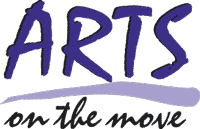STAGE MAKE-UP
The need for full stage make-up depends on your venue, your play and the strength of your lighting. The aim of stage make-up has always been to put colour and contours back into the face that have been removed by harsh stage lights. If your performance is happening on a large stage and under strong theatre spotlights, you’ll need to use effective stage make-up to ensure that you don’t look washed out and featureless.
If your performance is taking place in a small venue, such as a drama studio or school hall, you won’t need full-blown stage make-up. Lighting in these venues is often softer than that used in large-scale theatres. You are also closer to the audience so won’t need to define your features in order for them to be able to see your expressions clearly. In fact, in a small venue, too much stage make-up on an actor can be incredibly distracting!
The other aim of stage make-up is to enhance character. Whether your play is naturalistic, historical, or fantasy you’ll need the right stage make-up for each role. Some larger organisations might have a person available to apply stage make-up, but this is unusual. So each actor, with the help of the teacher or director, will need to create a look for their character and will probably be expected to apply their own make-up. Sometimes it’s good to have young actors apply each other’s make-up.
For many school and youth theatre productions, time will be short and casts large so make-up will need to be applied very quickly and effectively! In this situation it’s usual to skip the foundation and to use just a dusting of powder instead. This gives you time to focus on the eyes, cheeks and lips. Just make sure that, whatever you do for one cast member, you do for them all. It will look very odd if two or three actors are obviously made up whilst the rest aren’t.
The skill in using any stage make-up is to be able to apply it quickly but carefully enough to ensure that it stays in place throughout the performance. Keep some make-up to hand for if your actors need to reapply after dancing or after a particularly physical scene.
This video shows how to apply basic stage make-up on children. Particularly good if you have a large cast!
It’s a good idea to invest in some high quality stage make-up as it’s designed to go on quickly and efficiently and to stay put under hot lights. Popular brands include Ben Nye, Mehron and Kryolan.
Many theatre companies now use lighting instead of make-up to give their characters a certain look. For example, sidelights eradicate shadows to fill out a thin face and make it look younger; harsh overhead lights can be used for an ageing effect or to make the characters look haggard. It is worth exploring whether your actors need any make-up at all.
Scars, cuts and abrasions can be drawn onto the skin using fine-tipped brushes or sticks, but it is more effective to use professional make-up equipment to create these. Scars in particular will look more realistic and won’t rub off. You can buy kits online, at most costume suppliers, or even some joke shops. Or visit one of the make-up suppliers from our Directory.
Fake blood can be purchased from Amazon or from many joke shops. However, if your fake blood doesn’t have to be eaten (for example in a production of Macbeth), you can use a simple mixture of gelatine and red food colouring. We learnt from experience, though, that this fake blood stained the skin and clothes. So cover the skin with a thin layer of moisturiser before applying the blood and don’t wear anything that can’t be stained!
For safety please research and test properly before you apply any theatre make-up. Check that your young actors don’t have serious allergies to any make-up you’re planning to use and certainly don’t leave your testing until the first night of your performance!




 This site uses cookies for tracking and statistical purposes. Please read our
This site uses cookies for tracking and statistical purposes. Please read our